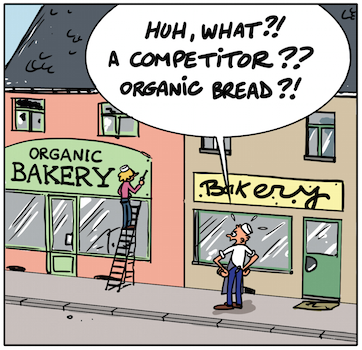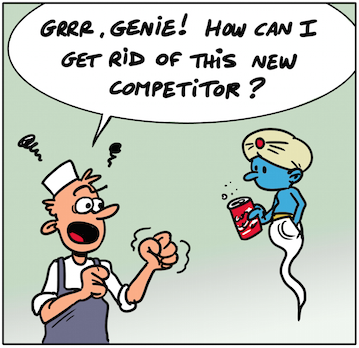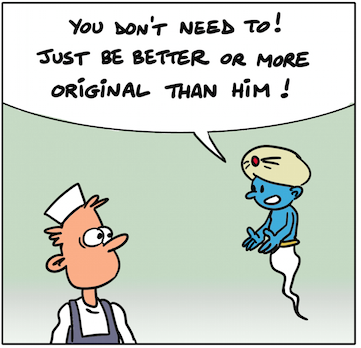-
What does "Transform" mean?
While the Product Models or Operation Models were stable, Transformation was a marginal activity. In a stable mode, we would improve the Product features and internal Processes incrementally.
The main part of the activity was therefore to Operate (Produce and Distribute) according to the established Model. Today, the rhythm of change is such that the Enterprise must permanently adapt its Models and create new ones: we are entering the Transformation domain.
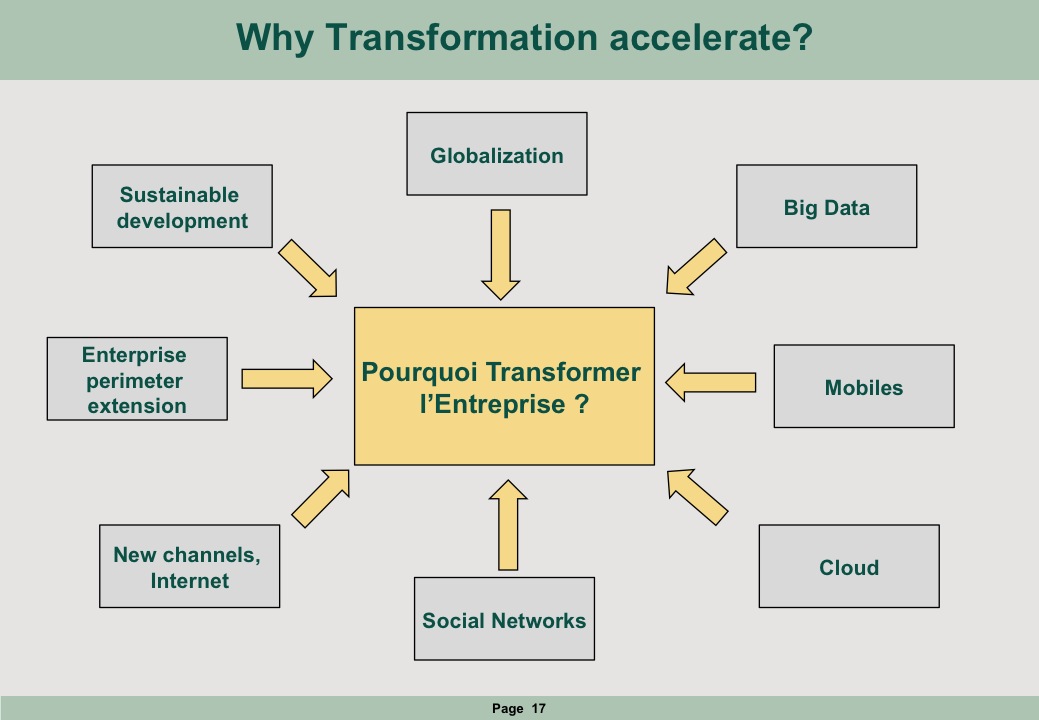
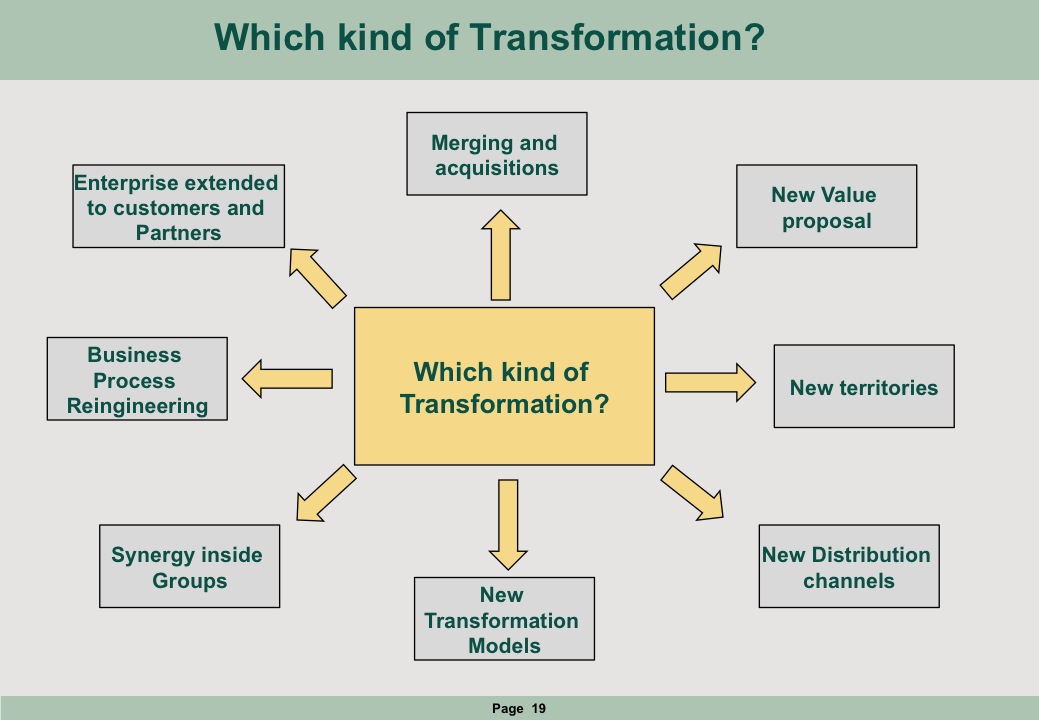
Transform means that we acquire a new Model and Deploy it.
The new Model can be:
"Acquire a new Model" means either acquiring a pre-built Model (for example, buying a software package or a license for a new procedure), building the new Model ourselves, or modifying the existing Model.
- A Product Model or an Offer Model which combines several Products: this is the innovation of the Offer (more aesthetic, more efficient, less expensive...)
- An Operation Model: this is the innovation of
the Operations (Process optimization, productivity or
quality gains...)
There are therefore only 2 jobs in the Enterprise:
- Operate according to the existing Model with the Operational Resources: this is what enables the Enterprise to live in the present
- Transform, that is to say, prepare the future by
building new Models and by deploying them
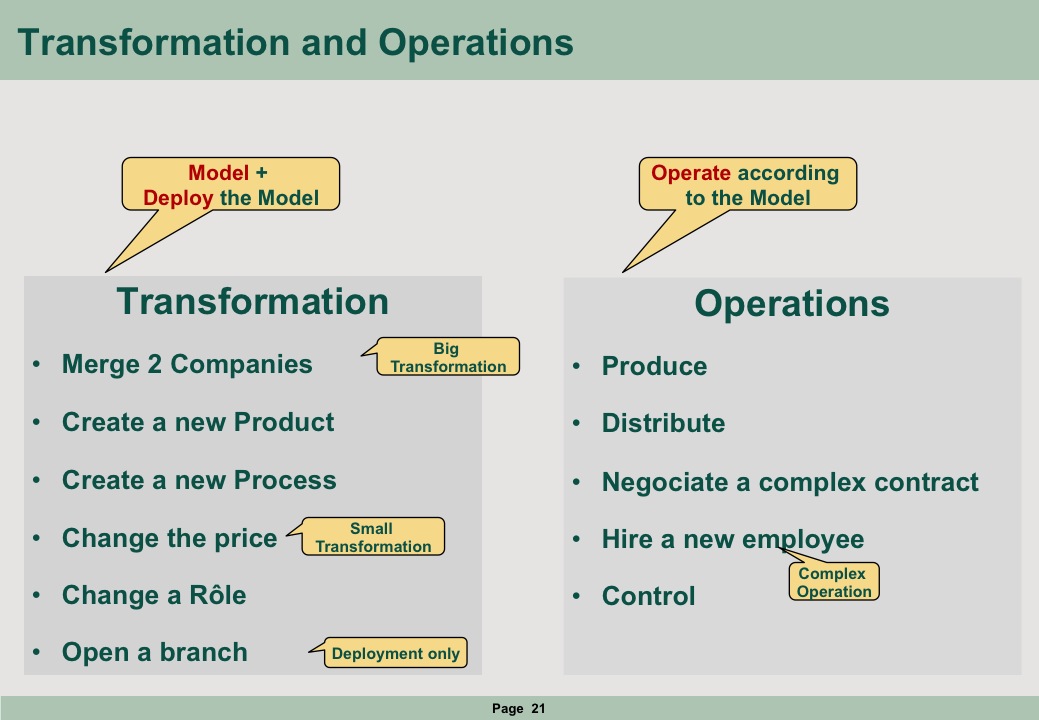
-
Transformation Processes
Transformation Processes are very different from Operation Processes. It is no longer a question of Distributing or Producing, but of managing Projects, defining a Road map, changing a price, modifying a Process, opening a new branch or a new shop, driving an Architecture project, deploying a new Solution, maintaining Solutions... We often use the term methodology to name the Model of Transformation Processes.
Deployment consists in adapting the Operational Resources to a new Model: reorganizing, allocating Human-Actors to new Organizational units, training, adapting premises, installing IT infrastructure, migrating information from one Model to another...
Remarks:
- a new deployment without change of Model such as opening a new shop or a new branch is nonetheless a Transformation, limited to the deployment phase. But, it is less risky as the Model has already been tested.
- Small transformations exist (changing a price)
which often take place through configuration (see the
scene "The Model must be
Modifiable by the Business") as do large
transformations (merging 2 enterprises). We will focus
mainly on large Transformations which pose the most
problems.
-
Carry out a Transformation assessment to convince others that we must deal with it
The areas for improvement in the Operations like optimizing the Supply Chain, the Sales or Back-Office Processes, are well identified by Executive Management. Means are budgeted to improving Operational Processes.
On the contrary, Executive Management only allocates, in general, a few resources to improving Transformation Processes. On the one hand because it is rarely aware of the overall cost of the Transformation; on the other hand because it does not believe that it is possible to progress strongly in this domain: the projects carry risks and there is not a lot we can do about it.
It is therefore necessary to carry out:
- An assessment of what the Enterprise Transformation costs: not only the IT Development costs, but also the costs for the Business Actors, Transformation Tools, management and related governance, training for operational Actors, dual processing, migration of information...
- A survey on the level of satisfaction regarding the
design or Solution modification timescales, and on
the quality of the Solutions.
This survey will automatically highlight that the global Transformation cost and the frustration of the Business regarding the Agility of the Solution is important enough for us to tackle this problem head on.

The story of George the Baker is made available under the terms of the
Creative Commons Attribution - NoDerivatives 4.0 International license.
